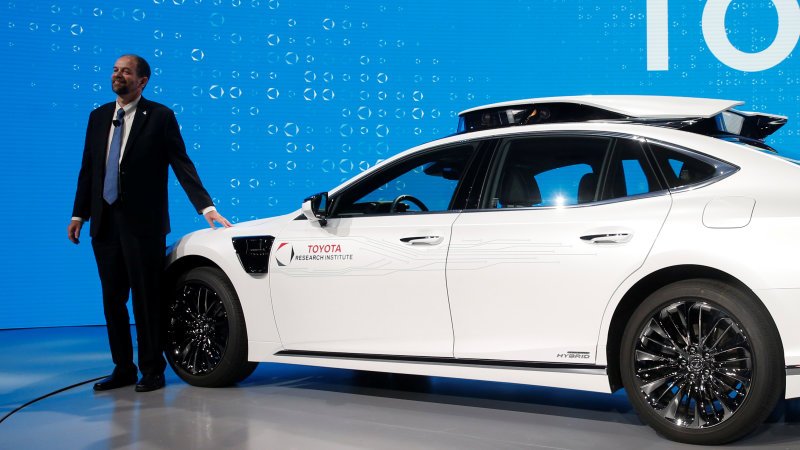Toyota is developing fighter-jet-inspired safety tech — and plans to share it

Toyota Research Institute had a breakthrough last year in its pursuit to make driving safer. It was so profound that Toyota wants to open it up to other automakers.
The inspiration was modern-day fighter jets, which use a low-level flight control system to translate the intent of the pilot and keep the aircraft stable and tucked neatly inside a specific safety envelope. TRI calls it blended envelope control, an approach that lets its "Guardian" driver assist system combine and coordinate the skills of the human driver and the vehicle they're driving.
TRI CEO Gill Pratt revealed Monday during CES 2019 the research arm's progress, an explanation of its approach, and most important, its intent to share its Guardian driver assist with other automakers. TRI is calling it "Guardian for all."
To be clear, Toyota Guardian or the "Guardian for all," system isn't in production cars, nor will it be for some time. Pratt said it would be shared "in the 2020s," but he isn't even entirely sure how it would be delivered to the rest of the industry. In a roundtable discussion with reporters, Pratt said he wasn't sure if they would license the software, or a combination of hardware and software, to automakers. He only noted that Toyota has the desire and intent to open it up to the rest of the automotive industry.
TRI, and Toyota as a result, have taken a dual approach to autonomy that it calls "Guardian" and the more fully autonomous "Chauffeur." The automaker intends to eventually develop and deploy fully autonomous cars to serve an aging population, the disabled, or whomever might need a robotaxi. But as Pratt noted Monday, there is still much to be done before these types of vehicles will be on the road in any meaningful way.
In the meantime, Pratt says "we have a moral obligation to apply automated vehicle technology to save as many lives as possible as soon as possible."
That's where the other part of that dual approach called Guardian comes in. Guardian is technology that operates in the background and steps in when needed. The driver is always driving, but Guardian is watching, sensing and anticipating problems.
Toyota Guardian is designed to amplify human control of the vehicle, not replace it, the company said. TRI showed a video during its CES presentation that of a three-car accident that included one of its self-driving research vehicles being driven in manual mode. The vehicle's sensors were all on and capturing data, however.
TRI contends that this blended envelope approach of Guardian would have anticipated or identified the pending incident and employed a corrective responsive in coordination with driver input. In this specific case, TRI's modeling and testing determined that the system would have prompted the vehicle to accelerate out of the way to avoid the accident altogether.
Related News
